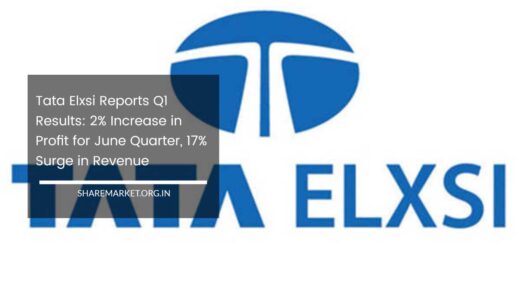Factors Influencing Insurance Premium

Factors Influencing Insurance Premium
Factors Influencing Insurance Premiums in India
Insurance serves as a financial safety net, providing protection against unforeseen events and potential losses. The cost of this protection, known as the insurance premium, varies widely and is influenced by a multitude of factors.
In India, these factors are shaped by a blend of demographic, policy-related, economic, underwriting, and market-specific elements.
This article explores the key determinants of insurance premiums in the Indian context, offering valuable insights for both consumers and insurers.
Understanding Insurance Premiums
Before diving into the specifics, it’s crucial to understand what insurance premiums are. An insurance premium is the amount you pay to an insurance company in exchange for coverage against potential losses.
This payment can be made monthly, quarterly, or annually, depending on the policy. The premium amount is determined through a complex process that involves assessing various risk factors associated with the policyholder and the coverage itself.
Factors Influencing Insurance Premiums in India
Demographic Factors
Age
Age is a significant determinant of insurance premiums. Generally, younger individuals are considered lower risk compared to older individuals.
This is because younger people are less likely to suffer from severe health conditions or accidents. Consequently, they often pay lower premiums. As individuals age, the likelihood of health issues or accidents increases, leading to higher premiums to offset the greater risk.
Gender
Historically, gender has influenced insurance premiums, with women often paying lower premiums for health and life insurance due to statistically lower risk profiles.
However, with the growing emphasis on gender equality and changing risk patterns, the difference in premiums between genders is narrowing. Many insurers are now focusing more on individual risk profiles rather than generalizing based on gender alone.
Occupation
The nature of one’s occupation significantly impacts insurance premiums. High-risk professions such as construction workers, miners, or pilots face greater accident probabilities.
Consequently, individuals in these professions often face higher premiums due to the increased risk of claims. Conversely, occupations with lower risk profiles typically attract lower premiums.
Location
Geographical location plays a crucial role in determining insurance premiums. Urban areas, where the cost of living and medical expenses are higher, tend to have higher premiums compared to rural areas.
Additionally, urban locations are more prone to specific risks like theft or vandalism, which can also influence the premium amount.
Lifestyle
Lifestyle choices have a direct impact on insurance premiums, especially in health insurance. Unhealthy habits such as smoking, excessive drinking, or obesity increase the likelihood of health issues, leading to higher premiums. Insurers consider these factors when assessing risk and determining premium rates.
Policy-Related Factors
Type of Insurance
The type of insurance policy you choose has a substantial impact on the premium amount. Different types of insurance—such as life, health, motor, and home insurance—come with varying premium structures.
For instance, life insurance premiums are influenced by factors such as the policy term, coverage amount, and the policyholder’s age and health. Health insurance premiums are affected by the level of coverage and additional benefits included in the policy.
Sum Insured
The sum insured, or coverage amount, directly affects the premium. A higher sum insured means that the insurer is liable for a larger amount in the event of a claim.
Therefore, higher coverage amounts result in higher premiums, reflecting the increased financial risk to the insurer.
Policy Term
The duration of the policy term can influence the premium. Generally, longer policy terms lead to higher premiums because the insurer is assuming a longer period of risk.
However, some insurers may offer discounts for committing to longer policy terms as a way to attract and retain customers.
Add-on Covers
Add-on covers or rider benefits are additional features that can be included in an insurance policy. These can enhance the coverage by including protections such as critical illness cover or accidental death benefits. While these add-ons provide extra security, they also increase the overall premium.
Deductible
The deductible is the amount you agree to pay out-of-pocket before the insurance coverage kicks in. A higher deductible typically results in a lower premium because you are assuming more of the financial risk. Conversely, a lower deductible will increase the premium as the insurer’s risk is higher.
No Claim Bonus
In motor insurance, a no-claim bonus is a discount given for a claim-free period. If you do not make any claims during a policy year, you are eligible for a discount on the premium for the subsequent year. This encourages policyholders to drive safely and avoid unnecessary claims.
Economic Factors
Inflation
Inflation impacts the cost of healthcare, repairs, and replacements, all of which influence insurance premiums. As prices rise due to inflation, the cost of covering potential claims also increases. Consequently, insurers adjust premiums to account for these economic changes.
Interest Rates
Interest rates have an indirect effect on insurance premiums. Insurers invest the premiums collected to generate returns, which can offset some of the costs associated with claims.
Changes in economic interest rates can affect investment returns, thereby influencing premium rates. Lower interest rates may lead to higher premiums as insurers seek to cover their increased costs.
Claim Ratio
The claim ratio is the ratio of claims paid out to premiums collected. A high claim ratio indicates that insurers are paying out a large proportion of the premiums collected, which can lead to higher premiums as insurers seek to balance their finances. Conversely, a lower claim ratio might lead to more stable or lower premiums.
Competition
The level of competition within the insurance market can impact premiums. In a highly competitive market, insurers may lower premiums to attract customers.
Competitive pressures can drive insurers to offer more attractive pricing, potentially leading to lower premiums for consumers.
Underwriting Factors
Health Assessment
In health insurance, a medical examination or health assessment helps insurers evaluate the risk associated with a policyholder.
Factors such as pre-existing conditions, overall health, and medical history are considered during underwriting. A higher risk profile, based on the health assessment, can lead to higher premiums.
Driving Record
For motor insurance, the driving record of the policyholder is a crucial underwriting factor. A clean driving record with no history of accidents or violations typically results in lower premiums.
On the other hand, a history of accidents or traffic violations increases the perceived risk and, consequently, the premium amount.
Property Valuation
In property insurance, the valuation of the property being insured is a key determinant of the premium. Higher property values and locations prone to specific risks (e.g., flood zones) generally result in higher premiums. Accurate property valuation helps insurers assess the potential financial risk and set appropriate premiums.
Factors Specific to the Indian Insurance Market
Regulatory Environment
The Insurance Regulatory and Development Authority of India (IRDAI) plays a significant role in shaping the insurance landscape in India.
IRDAI sets guidelines and regulations that influence premium structures, ensuring fairness and transparency in the industry. Changes in regulatory policies can impact premium rates and insurance practices.
Tax Benefits
Insurance premiums often come with tax benefits under sections like 80C of the Income Tax Act. Tax incentives can influence purchasing decisions and indirectly affect premium structures.
For instance, the availability of tax deductions may encourage individuals to opt for higher coverage, potentially impacting premium calculations.
Rural Penetration
Insurance penetration in rural India is relatively low compared to urban areas. As awareness about insurance grows and products are tailored to meet rural needs, premiums in these regions might evolve. Insurers are increasingly focusing on expanding their reach into rural areas, which can affect premium structures.
Natural Disasters
India’s vulnerability to natural disasters, such as floods, earthquakes, and cyclones, influences premiums for property and crop insurance. Areas prone to frequent natural calamities face higher premiums due to the increased risk of claims. Insurers assess the risk associated with these factors to determine appropriate premium rates.
Impact of Digitalization
Digitalization is reshaping the insurance industry in India. Technologies like telematics, which monitor driving behavior, online health assessments, and advanced data analytics, are influencing premium calculations.
For instance, telematics can lead to personalized premiums based on actual driving habits rather than general assumptions. Digital tools enable insurers to assess risk more accurately and offer tailored premium rates.
Final Remarks
Insurance premiums in India are influenced by a complex interplay of demographic, policy-related, economic, underwriting, and market-specific factors.
Understanding these factors helps consumers make informed decisions and enables insurers to develop effective pricing strategies.
As the Indian insurance market continues to evolve, staying informed about these influences is essential for all stakeholders involved.
By navigating these factors effectively, both consumers and insurers can achieve a more balanced and equitable insurance landscape.

















